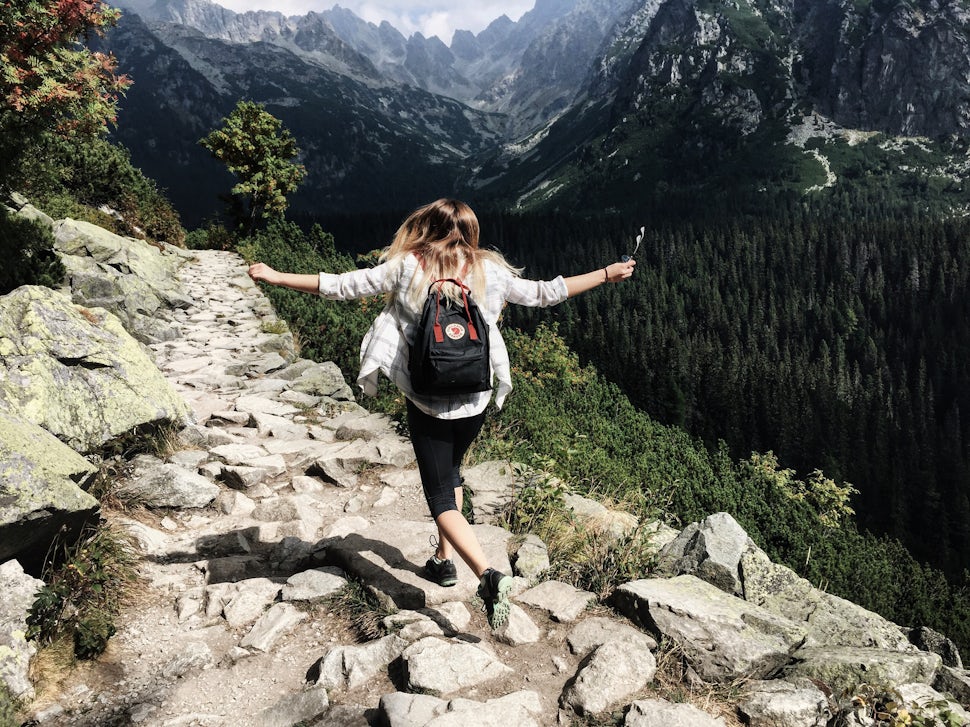How to Increase Lung Capacity So You Can Hike Hills Like a Boss
Blow them up like balloons.

So you want to hike some hideous beast-mountain that has a summit of 11,000 feet or more. Or maybe you're looking to hike a shorter, but hellishly steep hike that challenges you at every switchback. Or maybe you just want to be able to climb a set of stairs without gasping for air when you get to the top.
Guess what? You can. You can do all of these things, yes, even the stairs. It'll take some effort and time - but you'll be able to knock out some beast trails with a vengeance.
Here's how:
1. Start walking more
Hiking is walking. If you're going to do more challenging hikes, walk more.
I try - emphasis on "try" - to take breaks at work every hour to go for a short walk, even if it means just going up and down some stairwells. The company I work at has a gym with a treadmill, so on rainy days I'll walk on that. I'll walk on higher speeds, steep inclines, do some intervals or try to make myself sweat just a little.
Walking more is an excellent way to get started and build up to more challenging hikes. You can even challenge yourself by walking where you'd usually drive, if possible. Need to grab something from the grocery store? Walk there. Are you able to walk to work? Go for it. Is there a cool trail a couple miles away? Walk to the trail and then hike it.
2. Do little switchbacks on hills
Here's how I learned how to run hills: miniature switchbacks.
It may look stupid, but if you're going up a hill and you're wanting to stop, try slowing your pace a little and start going across the way instead of straight up. It allows you to catch your breath while still running. You can translate this into walking or running as well.
If I'm hiking at a high speed and want to keep going, I do switchbacks to maintain my pace but give my lungs a good burn. Yes, you'll look drunk, but it also increases your lung capacity and psychologically keeps you going.
3. Cardio, cardio, cardio
Cardio's been made out to be the bad guy lately and weights have made a massive comeback. That's okay - weightlifting makes my butt look AWESOME and I've never had toned arms until I worked up to 50 push ups in just a month. Besides, cardio tends to equal not breathing which equals wow, this sucks and I give up.
Buuuuuut that's kind of irrelevant when you're hiking.
If you're hiking, you need a good combination of cardio and strength training. In fact, I recommend focusing more on cardio in the beginning, especially if you're looking to do steeper hikes. Do a stair climber, elliptical machine, spin class, or anything that increases your endurance.
4. Build slowly
My lungs used to be little deflated balloons - anything remotely challenging left me breathing hard for minutes. After a couple of years of consistent cardio, they're more like hot air balloons. I still need fire (aka energy) to keep me going, but I've got endurance for days. I know you can get this way too - and it'll make your hikes even more amazing.
We want to acknowledge and thank the past, present, and future generations of all Native Nations and Indigenous Peoples whose ancestral lands we travel, explore, and play on. Always practice Leave No Trace ethics on your adventures and follow local regulations. Please explore responsibly!
Do you love the outdoors?
Yep, us too. That's why we send you the best local adventures, stories, and expert advice, right to your inbox.








